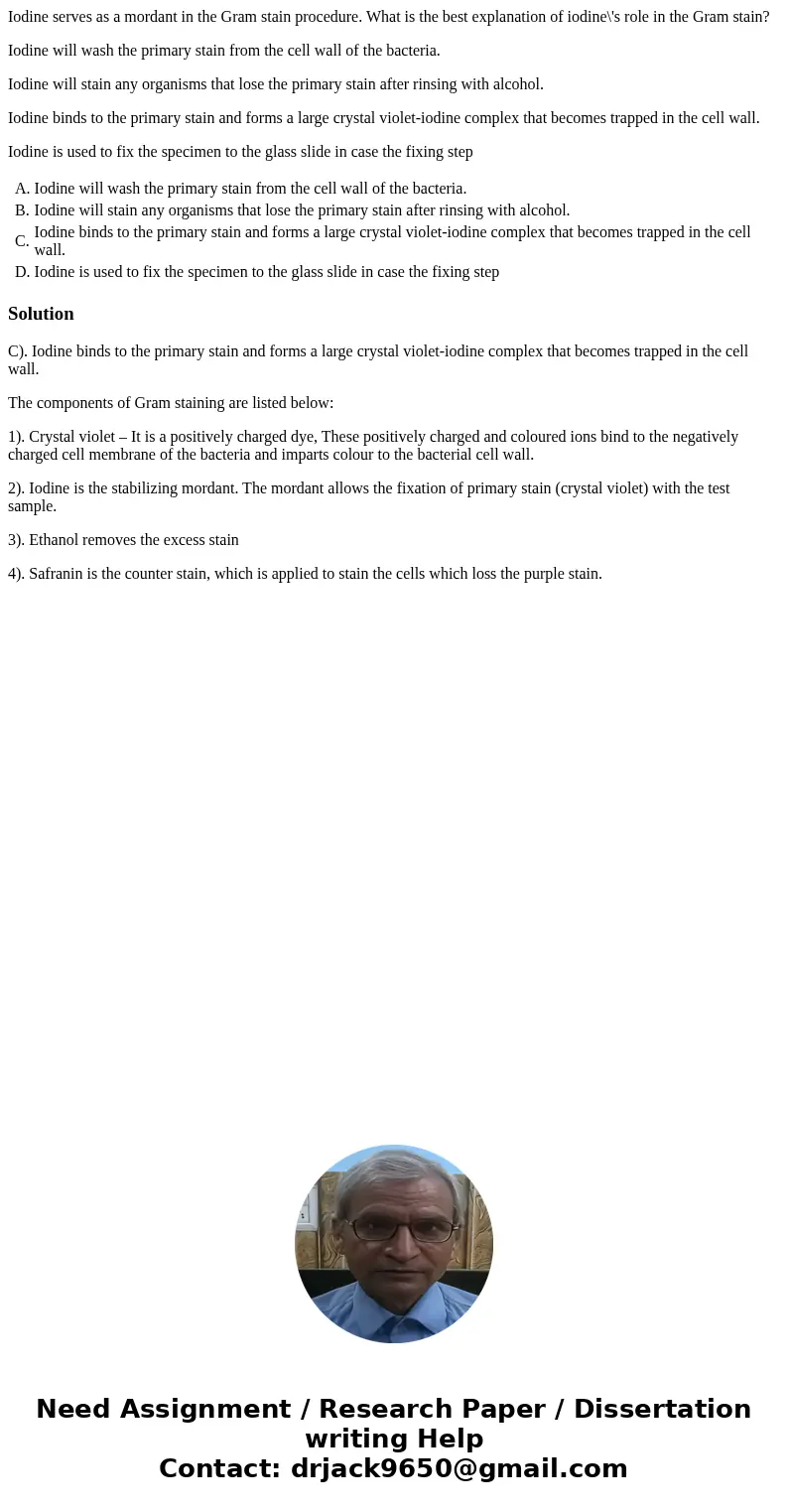Iodine serves as a mordant in the Gram stain procedure What
Iodine serves as a mordant in the Gram stain procedure. What is the best explanation of iodine\'s role in the Gram stain?
Iodine will wash the primary stain from the cell wall of the bacteria.
Iodine will stain any organisms that lose the primary stain after rinsing with alcohol.
Iodine binds to the primary stain and forms a large crystal violet-iodine complex that becomes trapped in the cell wall.
Iodine is used to fix the specimen to the glass slide in case the fixing step
| A. | Iodine will wash the primary stain from the cell wall of the bacteria. | |
| B. | Iodine will stain any organisms that lose the primary stain after rinsing with alcohol. | |
| C. | Iodine binds to the primary stain and forms a large crystal violet-iodine complex that becomes trapped in the cell wall. | |
| D. | Iodine is used to fix the specimen to the glass slide in case the fixing step |
Solution
C). Iodine binds to the primary stain and forms a large crystal violet-iodine complex that becomes trapped in the cell wall.
The components of Gram staining are listed below:
1). Crystal violet – It is a positively charged dye, These positively charged and coloured ions bind to the negatively charged cell membrane of the bacteria and imparts colour to the bacterial cell wall.
2). Iodine is the stabilizing mordant. The mordant allows the fixation of primary stain (crystal violet) with the test sample.
3). Ethanol removes the excess stain
4). Safranin is the counter stain, which is applied to stain the cells which loss the purple stain.

 Homework Sourse
Homework Sourse